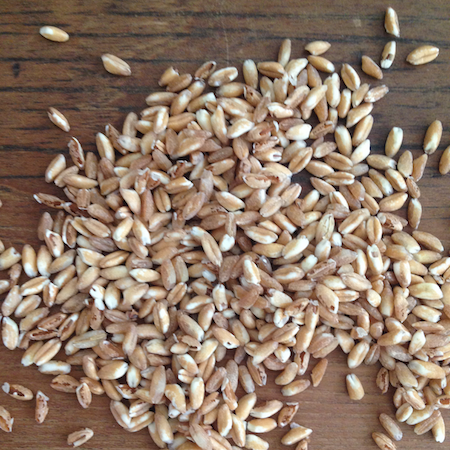
Farro is considered the Mother of all grains; the original grain from which all others come from including rice, barley, wheat and rye. Farro is a type of wheat called emmer and has been around for more than 6,000 years when the Egyptians began using it in baking. Long-loved by the Italians, it was ground into a paste, then cooked and used in plus, an Italian polenta that the Roman poor ate for ages.
Eventually, farro fell out of favor because the grain is difficult to grow and yields are often low. Because of this, farmers in the Mediterranean switched from the farming of farro and substituted with grains that had higher yields. Recently, however, farro has begun its comeback and is growing in popularity with chefs throughout Europe.
As consumers are looking to add more whole grains to their diets, farro is an ideal choice. Its resurgence is being catapulted along by chefs who incorporate it into their menus, creating tasty dishes from salads and soups to beef and chicken creations. Unlike wheat, the husk adheres to the grain, making it high in fiber, vitamin B and protein. In Tuscany, for example, when combined with legumes, the meal is a complete protein source. The Swiss use it in breads and various farro products are available including farro pasta.
When cooked it has a firm, chewy texture and a nutty taste, making it ideal for soups, sauces, gravies and salads. Because farro has a low gluten content, it can often be tolerated by those with wheat allergies. It is easily digestible into carbohydrates for energy.
Other popular combinations include farro and beans, farro soup, or as an accompaniment to vegetables. If farro isn’t available, spelt and barley can be good substitutes for farro in a recipe. Cooking times need be adjusted, as neither spelt nor barley need to be cooked as long.
Relatively easy to prepare, farro must be washed well, picked through, then soaked for up to 8 hours. It can then be cooked for two hours in liquid (or in a pressure cooker for an hour). As well, it can be added directly to a vegetable broth then added to a soup once cooked. Keep in mind that farro continues to absorb liquids once it is taken off the heat, so it plumps up considerably. Rarely can it be overcooked.
When seeking out farro (Triticum dicoccum), look for farro perlato, which indicates that the hull has been removed and there is no need to pre-soak – a great way to save time in the kitchen. It can be found at your local supermarket or health food store in the grain or bulk food section.





